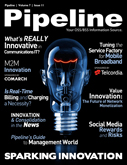
The downside is taking the
user out of the Facebook comfort zone;
the upside is that it works.
Another obvious issue with AT&T’s
Facebook set up is that when one
clicks into the customer care section,
the space above the fold isn’t used
optimally. The user has to scroll down
to get to any navigation that leads to
sales, support or service. The only
action buttons above the fold are the
Facebook “Like” button and a “post to
our wall” button, which doesn’t really
leap out at the user. The “like” button
makes sense; AT&T’s Facebook page
has almost 1.4 million “likes”. But the
“post to our wall” button launches
AT&T’s entire main Facebook wall –
including the navigation menu - within
the limited viewing area, rather than
taking the user back to the main wall.
It’s inelegant.
The major issue with these kinds of presentation and navigation problems is that they create barriers for customers who want to access online support through Facebook. If any social media channel, Facebook being the reigning king of them all, is going to be used for customer interaction, it has to work well. There can be no artificial barriers, extra clicks, sloppy presentation, or unobvious navigation. It has to be presented right up front, and as easy to use as, say, the iPhone. My two year old can use an iPhone and iPad with ease; that’s not an exaggeration.
This speaks to another issue; Facebooks says that 250 million people visit its site monthly through a mobile device. The iPhone app is the primary form of Facebook access in my family. Anything any company does on Facebook needs to be mobile friendly. If a customer can’t use the tools provided on a widescreen laptop, it’s guaranteed that mobile access just isn’t going to fly. And, in fact, as an AT&T customer, I have no way of even accessing online customer support through the Facebook app on my iPhone.
Some Kudos for AT&T
We’ll put down the lash now and give AT&T some credit for having had a dedicated social media team since 2009. “Today we have 28 customer care representatives supporting all social media channels for the brand including our mobile, B2B and U-verse offerings,” says Chris Baccus, AT&T director of social media.





